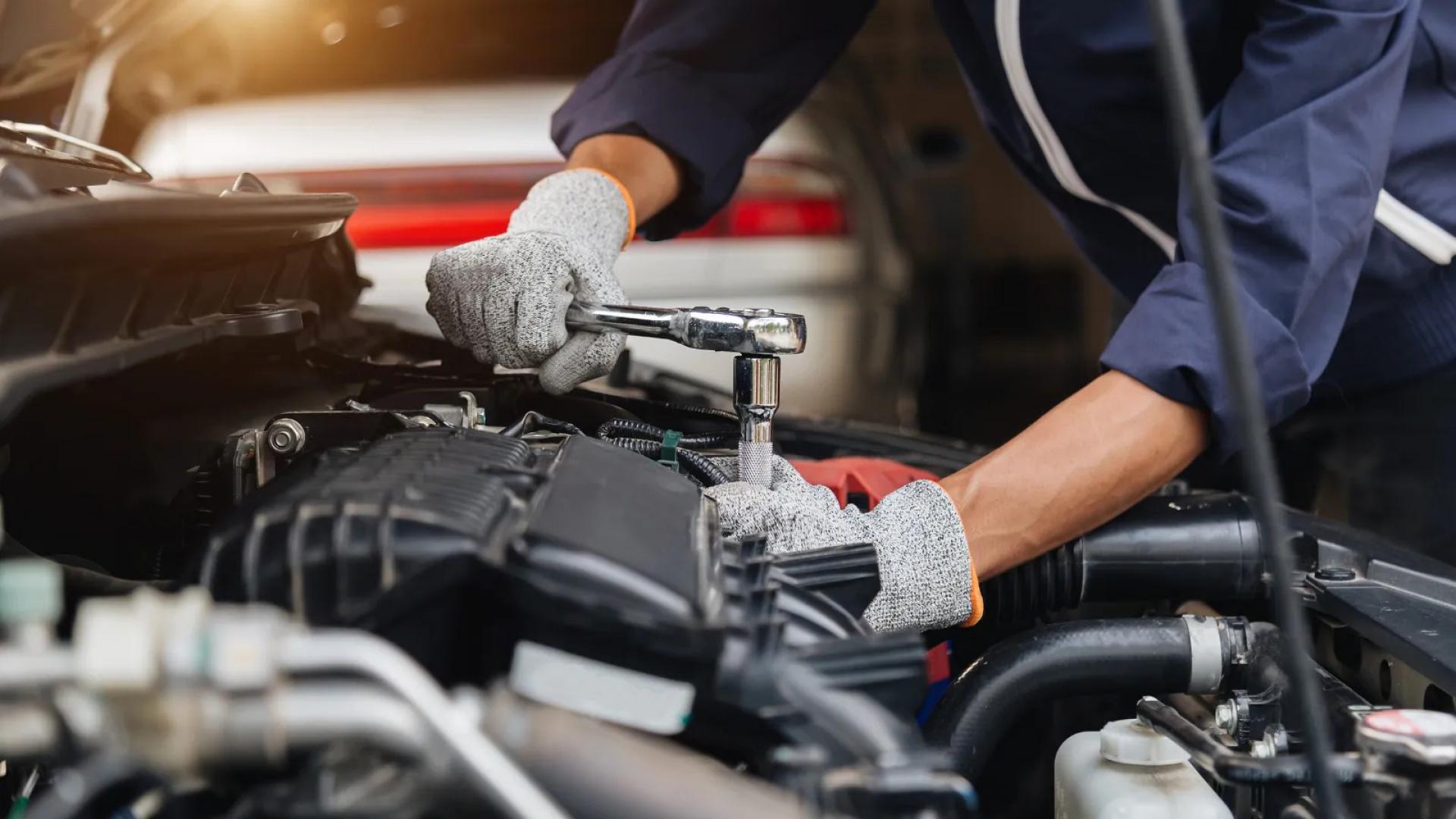Vehicle Maintenance Guide for New Drivers: Keep Your Car Safe
Published on
As a new driver, understanding basic vehicle maintenance is crucial for safety, reliability, and passing your road tests. A well-maintained vehicle not only keeps you safe on the road but also demonstrates responsibility to examiners during your G2 and G tests. At Rajput Driving School, we emphasize the importance of vehicle maintenance as part of comprehensive driver education. This guide will teach you essential maintenance tasks that every new driver should know.

Why Vehicle Maintenance Matters for New Drivers
Proper vehicle maintenance is essential for several reasons:
Safety Benefits:
- Prevents Breakdowns: Reduces the risk of being stranded on the road
- Ensures Reliable Braking: Maintains stopping power when you need it most
- Improves Visibility: Clean lights and windows help you see and be seen
- Maintains Control: Proper tire condition and alignment ensure vehicle stability
- Prevents Accidents: Well-maintained vehicles respond predictably to driver inputs
Test Day Advantages:
- Examiner Confidence: Shows you take driving seriously
- Reliable Performance: Reduces risk of vehicle issues during testing
- Professional Appearance: Clean, well-maintained vehicle makes a good impression
- Peace of Mind: Allows you to focus on driving rather than worrying about vehicle problems
Pre-Drive Safety Inspection (PDI)
Every time you drive, you should perform a quick pre-drive inspection. This takes only 2-3 minutes but can prevent serious problems.
Exterior Checks (Walk-Around Inspection):
- Tires: Check for proper inflation, tread depth, and visible damage
- Lights: Verify all headlights, taillights, brake lights, and turn signals work
- Windows: Ensure all windows are clean and free from obstructions
- Mirrors: Check that all mirrors are clean and properly adjusted
- Body Damage: Look for any new damage that might affect safety
- License Plates: Ensure plates are visible and properly mounted
Interior Checks:
- Seat Position: Adjust driver's seat for comfortable control
- Mirror Adjustment: Position all mirrors for maximum visibility
- Dashboard Lights: Check for any warning lights that need attention
- Emergency Equipment: Verify first aid kit, emergency supplies are present
- Documentation: Ensure insurance and registration are in the vehicle
Weekly Maintenance Tasks
These tasks should be performed weekly to keep your vehicle in top condition:
Fluid Level Checks:
- Engine Oil: Check oil level and condition (should be between min/max marks)
- Coolant: Verify coolant level in the overflow tank
- Windshield Washer Fluid: Top up as needed for visibility
- Brake Fluid: Check brake fluid reservoir level
- Power Steering Fluid: Verify fluid level if applicable
Visual Inspections:
- Tire Condition: Look for uneven wear, cuts, or embedded objects
- Battery Terminals: Check for corrosion and ensure connections are tight
- Belts and Hoses: Look for cracks, fraying, or signs of wear
- Exhaust System: Check for unusual noises or visible damage
Monthly Maintenance Tasks
These more thorough checks should be done monthly:
Tire Maintenance:
- Tire Pressure: Check all tires including spare (use manufacturer's recommended pressure)
- Tire Rotation: Consider rotating tires for even wear
- Tread Depth: Use a penny test to check tread depth (minimum 4/32 inch)
- Tire Balance: Watch for vibration that might indicate balance issues
Light and Electrical Checks:
- All Exterior Lights: Test headlights, taillights, brake lights, turn signals, and hazard lights
- Interior Lights: Verify dome lights and dashboard illumination
- Horn: Test horn function
- Wipers: Check wiper blade condition and washer fluid spray
Seasonal Maintenance Considerations
Winter Preparation (Fall):
- Winter Tires: Install winter tires before first snowfall
- Battery Check: Test battery strength (cold weather reduces performance)
- Antifreeze: Ensure proper antifreeze concentration
- Emergency Kit: Prepare winter emergency supplies
- Heating System: Test defroster and heater function
Spring Preparation:
- Summer Tires: Switch back to all-season or summer tires
- Deep Cleaning: Remove winter salt and grime
- Air Conditioning: Test A/C system before hot weather
- Alignment Check: Have alignment checked after winter driving
Understanding Warning Lights and Gauges
Critical Warning Lights (Stop Driving Immediately):
- Engine Temperature: Red temperature light indicates overheating
- Oil Pressure: Low oil pressure can cause engine damage
- Brake System: Brake warning light indicates brake system problems
- Battery/Charging: Electrical system malfunction
Important Warning Lights (Address Soon):
- Check Engine: Engine management system issue
- Tire Pressure: Low tire pressure in one or more tires
- ABS System: Anti-lock brake system malfunction
- Airbag System: Safety system needs attention
Basic DIY Maintenance Tasks
Tasks You Can Do Yourself:
- Oil Changes: Learn to change oil and filter (with proper tools and knowledge)
- Air Filter Replacement: Replace engine air filter as needed
- Windshield Wiper Replacement: Change wiper blades when worn
- Battery Cleaning: Clean battery terminals to prevent corrosion
- Light Bulb Replacement: Replace burned-out light bulbs
- Tire Pressure Checks: Regular pressure monitoring and adjustment
When to Seek Professional Help:
- Brake System Work: Always have professionals handle brake repairs
- Engine Problems: Complex engine issues require diagnostic equipment
- Transmission Issues: Automatic transmission problems need expert attention
- Electrical Problems: Modern electrical systems require specialized tools
- Safety System Repairs: Airbags and safety systems need certified technicians
Maintenance Records and Documentation
Keeping Good Records:
- Service Log: Record all maintenance and repairs with dates and mileage
- Receipts: Keep receipts for all maintenance work and parts
- Warranty Information: Maintain warranty documentation
- Owner's Manual: Keep the manual for reference and service schedules
Benefits of Good Documentation:
- Resale Value: Well-documented maintenance increases vehicle value
- Warranty Claims: Proper records support warranty claims
- Insurance Claims: Maintenance records can support insurance claims
- Problem Diagnosis: Service history helps mechanics diagnose issues
Emergency Maintenance and Troubleshooting
Common Emergency Situations:
- Flat Tire: Know how to safely change a tire
- Dead Battery: Learn to jump-start a vehicle safely
- Overheating: Know what to do if your engine overheats
- Brake Failure: Understand emergency braking procedures
Emergency Kit Essentials:
- Basic Tools: Jumper cables, tire iron, jack, spare tire
- Safety Items: Reflective triangles, flashlight, first aid kit
- Fluids: Oil, coolant, windshield washer fluid
- Documentation: Emergency contacts, insurance information
Cost-Effective Maintenance Strategies
Preventive Maintenance:
- Follow Service Intervals: Adhere to manufacturer's recommended schedule
- Address Issues Early: Fix small problems before they become major repairs
- Quality Parts: Use quality parts and fluids for better longevity
- Professional Service: Have qualified technicians perform complex work
Money-Saving Tips:
- Learn Basic Tasks: Handle simple maintenance yourself
- Compare Prices: Get quotes from multiple service providers
- Preventive Care: Regular maintenance prevents expensive repairs
- Seasonal Planning: Plan maintenance around seasonal needs
Vehicle Maintenance and Your Driving Test
Test Day Preparation:
- Pre-Test Inspection: Perform thorough PDI before your test
- Clean Vehicle: Present a clean, well-maintained vehicle
- Check All Systems: Ensure all lights, signals, and safety systems work
- Fuel Level: Ensure adequate fuel for the test duration
- Documentation: Have all required documents ready
What Examiners Notice:
- Vehicle Condition: Well-maintained vehicles show responsibility
- Safety Systems: Working lights and signals are essential
- Cleanliness: Clean vehicle demonstrates pride and care
- Functionality: All systems must work properly for the test
Building Good Maintenance Habits
Creating a Routine:
- Set Reminders: Use calendar apps to remind you of maintenance tasks
- Weekly Schedule: Choose a specific day for weekly checks
- Seasonal Planning: Plan major maintenance around season changes
- Budget Planning: Include maintenance costs in your vehicle budget
Learning Resources:
- Owner's Manual: Your vehicle's manual is the best starting point
- Online Resources: Use reputable automotive websites and videos
- Local Classes: Look for basic automotive maintenance classes
- Professional Advice: Ask trusted mechanics for guidance
Conclusion: Maintenance as Part of Responsible Driving
Vehicle maintenance is an essential part of being a responsible driver. By developing good maintenance habits early in your driving career, you'll ensure your safety, protect your investment, and demonstrate the responsibility that examiners look for during road tests. Regular maintenance not only prevents breakdowns and accidents but also saves money in the long run by avoiding major repairs.
At Rajput Driving School, we include basic vehicle maintenance education as part of our comprehensive driver training programs. Our instructors will teach you the essential maintenance tasks that every driver should know, helping you become a more confident and responsible driver. Understanding your vehicle's needs is just as important as understanding the rules of the road.
Remember, a well-maintained vehicle is a safe vehicle. By following this maintenance guide and developing good habits, you'll be prepared not only for your driving tests but for a lifetime of safe driving. Start building these maintenance habits today, and you'll enjoy reliable, safe transportation for years to come.
Learn Vehicle Maintenance with UsCategories
Recent Posts
- Highway Merging Techniques: Master the G Test Highway Portion
- Night Driving Safety: Complete Guide for New Drivers
- New Driver Insurance Guide: Save Money on Car Insurance in Ontario
- Complete Roundabout Navigation Guide: Master Traffic Circles Safely
- Emergency Driving Situations: What to Do When Things Go Wrong
- What Happens If You Fail The G1 Test?
- Step-by-Step Guide to Getting Your G1, G2, and G Driver's Licence
- The G2 Road Test Examination Sheet Explained
- The G2 Road Test: How to Pass on Your First Try
- 10 Defensive Driving Tips That Can Save Your Life
- Failed the Ontario G Road Test? Here's What Happens Next
- Top 10 Reasons for Failing the G Road Test in Windsor, Ontario
- Winter Driving Safety: 10 Essential Tips
- 10 Reasons Why You Should Take Driver's Ed in Windsor, Ontario
- How to Parallel Park in 3 Easy Steps
- Top 5 Tips for Passing Your Driving Test in Windsor
- The Benefits of Taking Driving Lessons
- Understanding Ontario's Graduated Licensing System
